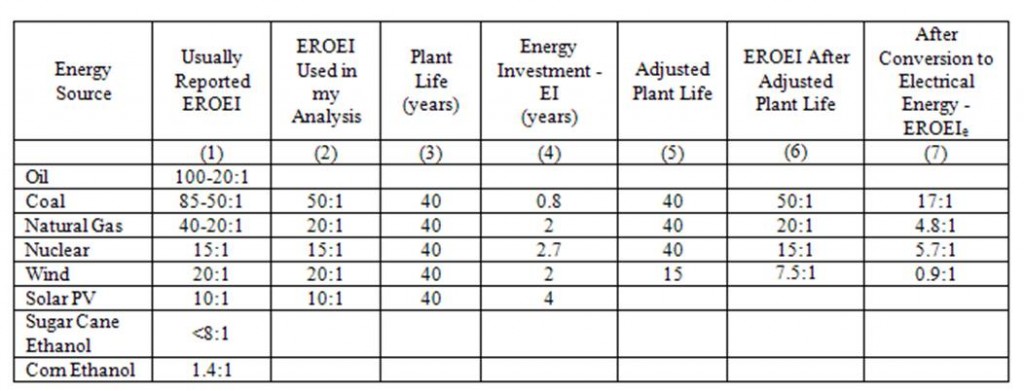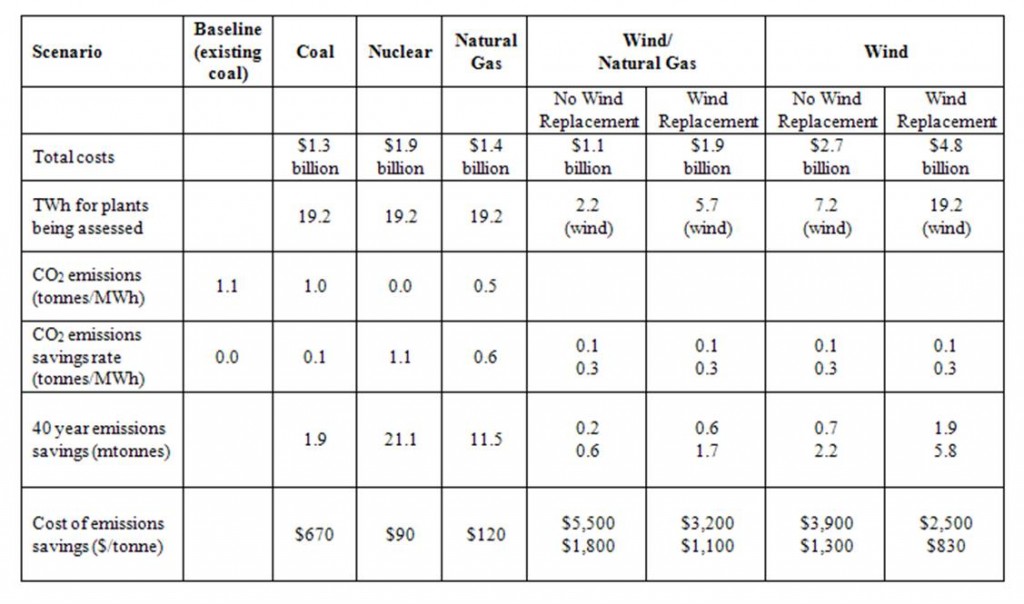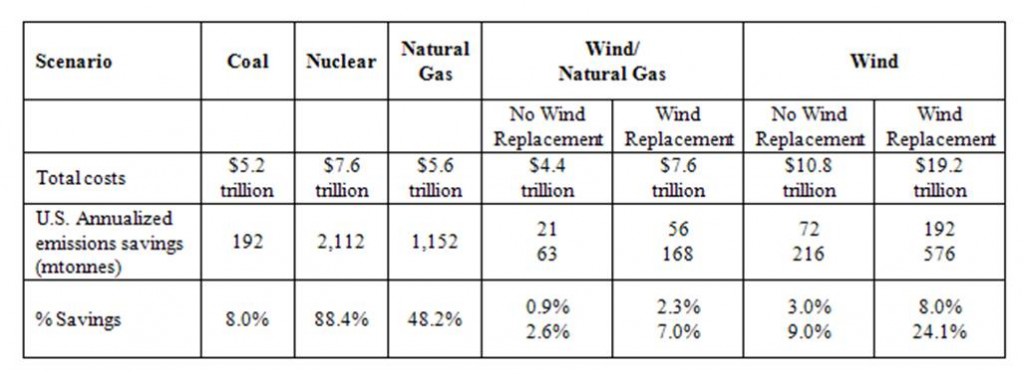This post introduces a five-part series that summarizes some of the most important information about the present and future of industrial wind power in light of the growing backlash against the industry’s taxpayer dependence. Readers are invited to add anything that I have missed.
Continuing government support for windpower must confront two questions. First, why do so many people think that we have to revolutionize our energy systems right now to avoid the consequences of running out of fossil fuels (or suffering very high costs), climate change, or other possible challenges that we might face? Note the emphasis on “right now,” meaning starting now with substantial changes in energy system directions, especially electricity systems, involving massive implementation of grid-connected, industrial-scale wind and solar generation plants.
Second, what is required for wind-subsidy proponents to agree that forced energy transformation is not feasible? A notable and growing number of people have tried with some success to close the gap between reality and romance, but progress has been slow because of the size, power, and persistence of the pro-wind movement. Without enough knowledge on the subject, the general public and media naturally rely on this movement in government, some of the scientific community, and many environmental groups.
Later posts will show why industrial wind fails the feasibility test to constructively change our electricity systems. The implications for government/taxpayer policies are obvious.
Response to the First Question
Drastic measures appear to make sense if most people believe a “silver bullet” solution (to some perceived threat requiring immediate action) is truly at hand. Setting aside a lengthy and contentious discussion of threats, is a “silver bullet” solution available to such a threat anyway?
This is apparently so, or so the pro-wind movement would have us believe. It is a revolutionary change to massive amounts of “new” renewable energy sources, wind and solar, especially wind, with extension to “clean energy” electrification of the transportation sector. I use quotes around the word new because they are new only in the sense that some, indeed many, are re-branding these old energy sources as viable and relevant in our current, complex, and high-energy-need times.
Proponents of some of these “new” renewable energy sources will say that their position is not one of providing a “silver bullet,” but is that we must have a range of energy sources available to us. This is a poor argument as the same could apply to justifying the presence of unproductive, unreliable employees in a company on the basis that every little bit helps. A lot of the “silver bullet” aspects get lost in soft, persuasive language, which does not require us to think much. The “silver bullet” label is valid in part because if we do what the “experts” and those in authority are telling us, we believe, albeit somewhat unconsciously, we can comfortably continue our lives as before.
Regardless of any such claims, what they propose is a revolution that must start immediately, with fast and substantial change in our electricity systems to new energy sources. But this revolution is long on proclamations and short on substance, so it is bound to fail in time. Unfortunately if further pursued, its failure will have severe adverse consequences on all aspects of modern life, for example in government, law and order, food and water supply, education, health and medical care, all forms of emergency services, commerce, industry, economic well-being (add to this list whatever is important to you). This is due to the risks this revolution brings to the viability of our electricity and financial systems. Future generations will not thank us for such policies. They will curse us for our folly.
One of the conclusions I have come to is that if major change is needed earlier, it is in society. As it now appears, the societies of developed, developing and undeveloped countries must make substantial changes before better energy solutions become feasible. We could have a pleasant surprise putting less pressure on the need for societal change. More likely is an unpleasant surprise, for example in the form of economic failure, which would have the effect of addressing many perceived threats, but in a highly undesirable way.
Either way, in the meantime we need access to economic, reliable energy – as and when required – on a continuous basis, starting now and for the foreseeable future, that is, the next 20-40 years or so. This is the sort of minimum time frame for the types of changes that must start to occur, whether societal or energy supply and is the optimal approach to best prepare us to meet threats, forecast or not.
To those who would argue that time is not on our side, I would respond that the only more timely approach that will deal satisfactorily with any currently feared threats is aggressive conservation, which is a societal change matter.
This led me to some of the keys in understanding our current confusion. First, we do not adequately take time frames into account when thinking about energy sources and systems change. Second, we do not properly appreciate what we have, and the need to maintain and improve it as the first important step, which should occupy us for the next 40 years or so. Third, we do not comprehend the monumental task of change in our energy infrastructures. Electricity is so completely imbedded in everything that we do and is so vital to us that it will take well architected, engineered, and implemented programs for change. Significant changes will be a long time coming, and we should be thinking of the second half of this century for this.
So once more, let me outline in more detail why such currently proposed energy policies involving revolutionary change are wrong.
Response to the Second Question
The folly of current conventional wisdom on energy policy will be dealt with in summary form below under the following headings:
- Energy return on energy invested
- Costs
- Subsidies
- Emissions reduction
- Other considerations, which include European energy policy flaws
Details will be provided in future posts in this series.
Energy Return on Energy Invested
This is commonly referred to as EROEI (sometimes simply EROI). I have not seen much emphasis on this way of looking at the viability of energy sources, but it seems to becoming more of a focus in energy analyses, even in the personal investment world.[1]
Tom Murphy of UCSD in his article “The Energy Trap: Do the Math” demonstrates the problems with the necessity of investing energy to access energy sources. His analysis looks at the impact of accounting for all the energy invested on a realistic front-loaded basis, but assumes the associated conversion means (generation plants) operate at full capacity over their expected lifetimes. The results after conversions to electrical energy are treated in general terms only, and I take this analysis further. My approach also provides the opportunity to expose more aspects of the associated energy sources, even if the upfront investment is amortized over the life of the energy source.
I also have had some correspondence with Thomas Homer-Dixon, who is (amongst other positions) the Director of the Waterloo Institute for Complexity and Innovation. One of his papers, “Complexity Science and Public Policy” discusses the importance of complexity in modern societies and its associated high energy needs. EROEI considerations are important, as Homer-Dixon points out in his paper:
“Taking the average energy return on investment of all energy sources in our economy, as we slide down that slope from 100:1 to 17:1 to 4:1 to 1:1, we’re inexorably using a larger and larger fraction of the wealth and capital in our economy simply to produce energy, and we have less left over for everything else we need to do – like solving our increasingly difficult problems.”
The EROEI for a number of energy sources is shown in Table I-1. Some obviously do not apply extensively to electricity systems but are included for general interest. I have purposely omitted hydro-electric energy, which has an EROEI of 100:1 because, like other renewable energy sources, it does not scale well, due to the size of reservoirs needed. Proponents of pumped hydro storage in support of substantial wind implementation take note.
Columns 1-4 are from the Murphy’s paper referenced above, and 5-7 are my further analysis.
Table I-1 – EROEI Before and After Conversion to Electrical Energy
The EROEI ranges shown in column 1 represent declining trends, and I use the more current ones (column 2) in my subsequent analysis. The energy investment (EI) includes energy components for plant implementations and fuel provision.
Even given a positive EROEI before conversion to electrical energy, wind produces a negative post-conversion result. This alone should disqualify it from consideration for commercialization. Industrial-scale solar is not considered further in this analysis because of its already low initial EROEI.
Again from Homer-Dixon’s paper:
“A modern society can’t sustain its complexity with low-quality energy; it needs copious quantities of high-quality energy.”
Because of their persistent erratic behavior, wind plants do not provide high-quality energy and rather extreme measures have to be taken to integrate them into our electricity systems, which already have a high degree of complexity, and this is reason enough to be careful. These measures are often disregarded when assessing costs, emissions, reliability and impacts on users, residential, commercial and industrial.
EROEI an important measure of the viability of energy sources, but many other considerations are equally so. First, a look at costs.
Implementation and Levelized Costs
This and the next two sections are based on projections for five scenarios over a 13-year period, say from 2012 to 2025. In each scenario a generation technology is selected to fill the gap between plant retirement and growth in demand based on electricity production of 1 TWh in 2012. This allows for easy scaling, for example to the U.S., which consumes about 4,000 TWh today.
Table I-2 provides a summary of the findings. The wind scenarios demonstrate two levels of wind penetration as shown. In the first, Wind/Natural Gas, both plant types are used to fill the gap and in the second, wind alone is assumed. The wind alone scenario is not feasible for many reasons. For example, extremely high levels of curtailment would be necessary, but it is instructive, and as some might project high wind penetrations, it is included. Both wind scenarios require gas plant balancing to provide the steady, reliable electricity which we require.
Table I-2 – Total Plant Overnight Implementation Cost for the Scenarios
Implementation costs for wind include the costs of gas balancing plants and grid changes unique to wind. The two values for wind are for the initial implementations only (15 year wind plant life) and for the wind plants being replaced twice in a 40 year period, respectively.
Total Costs
The total costs are based on the full levelized costs, which include financing and operations and maintenance costs, and in the wind scenarios, wind balancing gas plants and grid changes unique to wind. The analysis takes the year 12 new plant configuration and projects it over the 40 year life for most of the plant types involved, involving 19.2 TWh (which is 0.48 TWh x 40). As indicated above there are two possibilities for the wind scenarios: (1) Wind plants are not replaced at the end of their 15 year lives but some stranded costs persist for the wind balancing gas plants and unique-to-wind grid additions, as these are amortized over 40 years, or (2) Wind plants are replaced, which is unlikely but this provides a basis for some useful comparisons. Table I-3 shows the results.
Also shown is the effect of scaling to the U.S. electricity system.
Table I-3 – Total Costs for All Scenarios
Subsidies
A natural progression from costs is the level of subsidies on the same basis, that is, per MWh. Table I-4 provides a summary of the findings. Note the costs shown here are as seen by the plant developer/owner, not society at large as shown in Table I-3.
Table I-4 – Levelized Costs (Plant Developer/Owner View) and Subsidies ($/MWh)
This superficial view of wind subsidies appears to put wind at the same “cost” as the coal and natural gas plant types, and notably below nuclear. Comparisons cannot be made without the full wind costs taken into account. Remember this when claims are made about wind being competitive with other generation plant types.
Emissions
Emissions savings and costs are projected over the expected plant life, and Table I-5 shows the results. In this table wind CO2 emissions savings per MWh are shown at two levels: (1) at 0.10 tonnes/MWh to avoid dividing by 0, which produces a result of infinity, and (2) a generous 0.30 tonnes/MWh, which illustrates the relative poor and expensive contribution of wind even in these circumstances.
Table I-5 – CO2 Emissions Savings and Related Costs Compared to Existing Coal Plants
The implications for the U.S. are shown in Table I-6, based on the 2010 CO2 emissions from electricity generation of 2,389 million tonnes are shown in Table I-6.
Table I-6 – Scaling Emissions Results to the U.S.
The most likely outcome of pursuing wind as a CO2 emissions reduction strategy would be the “Wind/Natural Gas” scenario with the “No Replacement” option. In this time frame it should be amply demonstrated that wind is not a feasible policy. However there is the risk of electricity capacity shortfalls as a result and precious time will have been lost.
For complete comparisons between the scenarios, the “Wind/Natural Gas” with “Replacement” option is more instructive as all plants being assessed are producing over the period of 40 years. The wind savings are most likely in the range of few percent over the life of the wind plants at a cost of $7.6 trillion, compared to nuclear with 88% emissions savings for the same cost and natural gas at 48% savings for $5.6 trillion.
The total costs are important considerations, because these investments will be made involving significant debt.
Other Considerations
There are many other negative consequences with industrial-scale wind plants, including:
- No creation of jobs or a sustainable industrial policy
- Harm to human health
- Harm to other local flora and fauna
- Reduction of property values for nearby home-owners
- Contribution to widening of the gap between the wealthy and the rest of society
- No decrease in use of fossil fuels
- Do not provide energy independence/security
- Significant threat to financial and economic systems
- Creation of divisiveness within communities and families
European Energy Policy Flaws
European energy policy is not to be emulated for many reasons, including the notion that bureaucrats can successfully predict winners decades into the future, and the lack of understanding of the nature and size of the investments required for questionable energy sources. For an analysis of its many flaws see my article in the European Energy News, which was originally published at MasterResource as well as other analyses here.
In summary, there is no good earthly reason to pursue policies involving implementation of wind plants, and like renewable energy sources, for electricity systems. The consequences of doing so include putting our electricity, economic and financial systems, and ultimately the fabric of our society, at considerable risk.
—————————————————
Future posts:
- Part II – Analysis Approach and Implementation Costs
- Part III – Total Costs
- Part IV – Subsidies and Emissions
- Part V – Other Considerations and Conclusions
[1] I subscribe to an energy investment newsletter which recently had an article focusing on EROEI considerations for guiding energy investments. In the interests of full disclosure, I have not owned (to the best of my recollection and possibly through mutual funds at some distant time), do not now own, or plan to own, investment instruments in the energy sector. My only investments, outside of Canadian government guaranteed cash equivalent securities, is a small holding in gold stocks. I subscribe to this newsletter as another “window” on energy considerations. I have not received one cent for these posts from anyone, and I am not beholden to anyone who might benefit from them, except to the society in which I live, which I want to protect for the benefit of my grandchildren and their descendents.
Source: http://www.masterresource.org/2012/09/wind-consequences-i/
electrical contractor in what is an electrical contractor electrical service service electrical electrical jobs






No comments:
Post a Comment